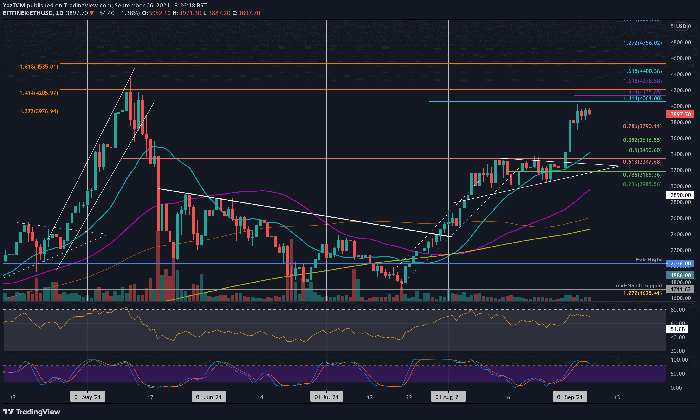The recent Bybit hack has sent shockwaves through the cryptocurrency community, as a staggering $1.4 billion was stolen, with 27.59% of the funds now untraceable. This alarming situation, driven by the notorious Lazarus Group, highlights the vulnerabilities in decentralized exchanges and the growing issue of crypto theft Bybit users face. According to CEO Ben Zhou, the hackers employed advanced tactics involving crypto mixers and bridges to launder their ill-gotten gains, leaving authorities grasping at shadows. As these untraceable crypto funds slip further from reach, the intricacies of transaction obfuscation raise critical questions about security in the crypto realm. The need for more robust tracking and regulatory measures has never been more urgent in the fight against such sophisticated crimes.
In the ever-evolving world of digital currency, the unprecedented cybercrime at Bybit has surfaced profoundly concerning issues regarding security and fund traceability. The attack, executed by entities linked to the Lazarus Group, is just one amongst various instances of considerable financial losses in the cryptocurrency sector. Major concerns have arisen over the operational methods employed, where criminals frequently utilize mixers and decentralized platforms to conceal their illicit transactions. This subterfuge poses a significant challenge to law enforcement agencies attempting to track unaccountable assets. The reality of cryptocurrencies, with their centralized and decentralized exchanges, further complicates the fight against this relentless wave of theft.
Understanding the Bybit Hack and Its Aftermath
The Bybit hack, which resulted in the loss of approximately $1.4 billion in digital assets, has raised significant concerns within the crypto community. This incident, attributed to North Korea’s notorious Lazarus Group, not only underscores the vulnerabilities in crypto exchanges but also highlights the need for enhanced security measures to protect users’ funds. Following the breach, Bybit’s CEO Ben Zhou revealed that a substantial 27.59% of the hacked cryptocurrency has transitioned into an untraceable state, primarily due to the strategic use of crypto mixers and other obfuscation techniques.
In the aftermath of the Bybit hack, it’s critical for investors and stakeholders to understand the implications of losing traceability over stolen funds. With only 68.57% of the stolen assets still trackable, the risk escalates for other exchanges and users, who may find themselves vulnerable to similar attacks. As hackers continue to exploit decentralized services and crypto mixers to launder funds, the industry must rally around implementing more robust anti-fraud measures and increasing cooperation across platforms to mitigate the risks associated with cryptocurrency theft.
Lazarus Group’s Techniques: A Closer Look at Crypto Mixers
The Lazarus Group has become infamous for its sophisticated hacking strategies, particularly its use of crypto mixers for money laundering. In the case of the Bybit hack, the attackers relied heavily on services like the Wasabi Mixer, which allows users to anonymize their cryptocurrency transactions effectively. By funneling stolen funds through a mix of several services, including CryptoMixer and Tornado Cash, the hackers created a convoluted transaction trail that is nearly impossible to trace back to the original source. This makes recovering stolen assets a daunting challenge even for seasoned forensic analysts.
Furthermore, the tactics employed by the Lazarus Group raise questions about the effectiveness of current regulatory frameworks aimed at combating crypto theft. As decentralized exchanges and mixers gain popularity, they provide criminals with tools to obscure the origins of illicit funds. Therefore, it is imperative for regulators and law enforcement agencies to enhance their understanding of these technologies. Implementing stricter regulations on mixing services and ensuring exchanges comply with due diligence requirements could potentially deter future hacks and assist in tracing stolen funds more effectively.
The Role of Decentralized Exchanges in Ecosystem Security
Decentralized exchanges (DEXs) have fundamentally altered the trading landscape by providing a platform where users can trade crypto assets directly, without the need for a central authority. However, the expanding use of DEXs has also inadvertently contributed to the challenges associated with tracking illicit funds. After the Bybit hack, a significant amount of the stolen Ethereum was converted into Bitcoin and transferred through various DEXs, further complicating recovery efforts. The anonymity provided by these platforms, while beneficial for user privacy, also opens a gateway for bad actors looking to exploit loopholes in the system.
As the adoption of decentralized exchanges grows, so too must the capabilities of security measures within the ecosystem. This includes the need for enhanced monitoring and transaction analysis tools that can effectively detect suspicious activities. The collaboration between DEX operators and regulatory bodies can lead to the establishment of best practices that prioritize security without compromising the core values of decentralization. Educating users about the risks associated with unregulated exchanges is also crucial to promote safer trading practices in an increasingly complex digital asset environment.
The Importance of Crypto Mixers and Anonymity Services
Crypto mixers play a pivotal role in the cryptocurrency landscape, offering users a means to enhance their privacy and maintain anonymity during transactions. However, as demonstrated by the Bybit hack, these services can be misused by malicious actors to launder stolen funds, making it essential for the industry to strike a balance between user privacy and security. While crypto mixers provide legitimate use cases, such as safeguarding individual privacy, they also pose significant challenges in combating fraud and theft.
The duality of crypto mixers necessitates a more nuanced approach to regulation and compliance. Industry participants must advocate for transparency measures within these services, which could include KYC (Know Your Customer) protocols that help distinguish between legitimate and illicit use. By fostering greater cooperation between privacy advocates and regulatory entities, the crypto industry can develop robust frameworks that protect users’ rights while simultaneously reducing the opportunities for bad actors to exploit anonymity services.
Analyzing the Impact of the Bybit Hack on Future Exchanges
The ramifications of the Bybit hack are far-reaching and will likely shape the future operational protocols of cryptocurrency exchanges. With a notable portion of the stolen assets now untraceable, exchanges are being called to reassess their security measures and implement stricter safeguards to protect user funds. Future exchanges may adopt multi-sig wallets, enhance their monitoring systems for abnormal withdrawal patterns, and integrate advanced transaction tracking technologies to counteract the growing threat of hacking incidents.
Moreover, the Bybit hack serves as a wake-up call for the entire ecosystem, highlighting the need for collaborative efforts among exchanges, regulators, and law enforcement agencies. By sharing intelligence and best practices, the industry can better prepare for potential threats and improve the overall security framework. Exchanges may also increasingly participate in bounty programs to incentivize the community in detecting and reporting vulnerabilities, which could enhance trust and attract a more risk-averse investor base in a post-hack environment.
Untraceable Crypto Funds: A Growing Concern in the Industry
The emergence of untraceable crypto funds has become a pressing issue in the financial sector, particularly following high-profile hacks such as the one experienced by Bybit. With nearly 500,000 ETH stolen, and a significant percentage lost to obscuration techniques, the ability to track illicit funds is becoming increasingly complex. This poses a serious challenge to law enforcement and regulatory bodies, who find it difficult to pursue criminals who exploit the anonymity features inherent in cryptocurrencies.
The growth of untraceable funds highlights the urgent need for enhanced tracking and auditing capabilities within the cryptocurrency infrastructure. As the crypto market matures, stakeholders must advocate for a unified approach to tracing movements and transactions. Employing sophisticated blockchain analytics tools can aid in identifying patterns and tracing financial flows, effectively enhancing the ability to combat crypto theft and protect investor interests. Without proactive measures, the proliferation of untraceable funds could undermine confidence in cryptocurrency as a legitimate financial medium.
The Role of Peer-to-Peer Exchanges Post-Bybit Hack
Peer-to-peer (P2P) exchanges have garnered increasing attention as viable alternatives to traditional centralized platforms. After the Bybit hack, the spotlight is on ensuring that these P2P platforms can operate securely and transparently. With the ability to facilitate trades without an intermediary, P2P exchanges allow users to transact directly, yet they are not immune to the risks associated with crypto theft and laundering. Thus, it is vital for these platforms to implement robust verification processes to enhance security and build trust within the community.
As P2P exchanges continue to evolve, they must also prioritize education regarding safe trading practices among their user base. By raising awareness of potential risks, these platforms can cultivate a more informed community that actively participates in protecting itself from fraud. This grassroots effort combined with improved technology will not only bolster the resilience of P2P exchanges but also contribute to a healthier and more secure cryptocurrency ecosystem overall.
Future of Crypto Security After Bybit’s Lessons
In light of the lessons learned from the Bybit hack, the future of crypto security appears to be at a critical juncture. Cryptocurrency exchanges must adapt to the evolving landscape of threats by incorporating state-of-the-art cybersecurity measures and remaining vigilant against potential exploits. This includes ongoing training for security teams, regular audits of existing systems, and the implementation of cutting-edge technologies such as machine learning for anomaly detection.
Furthermore, collaboration between exchanges, governmental bodies, and cybersecurity experts will become increasingly paramount. A joint effort to establish minimum security standards and share threat intelligence can significantly reduce vulnerabilities across the industry. As the crypto universe evolves, the importance of proactive cybersecurity measures will only grow, ensuring that exchanges can protect user assets effectively while fostering trust in the broader ecosystem.
Strengthening Regulations in the Era of Crypto Thefts
The rise in cryptocurrency thefts, exemplified by the Bybit hack, accentuates the urgent need for comprehensive regulations in the industry. As authorities scramble to catch up with the rapid evolution of digital assets, the establishment of clear regulations governing the functions of crypto exchanges, mixers, and other related services is critical. Regulations that ensure strict compliance with anti-money laundering (AML) and counter-terrorism financing (CTF) measures are essential to safeguard the integrity of the market and protect investors from future thefts.
Moreover, regulatory measures should be flexible enough to accommodate the unique characteristics of blockchain technology. This involves not only overseeing exchanges but also ensuring that privacy tools such as mixers do not become facilitators for illegal activities. By enhancing regulatory frameworks, the industry can work towards creating a safer and more transparent environment, inspiring confidence among users while deterring criminal activities that exploit the innovative nature of cryptocurrency.
Frequently Asked Questions
What happened during the Bybit hack involving the Lazarus Group?
The Bybit hack, attributed to North Korea’s Lazarus Group, resulted in the theft of approximately $1.4 billion in cryptocurrency, with a significant amount becoming untraceable due to the use of crypto mixers and other obfuscation tactics.
How did the Lazarus Group hide the stolen crypto from the Bybit hack?
The Lazarus Group utilized various crypto mixers, including Wasabi Mixer, and decentralized exchanges to conceal their stolen funds. By dispersing assets across numerous wallets and using cross-chain swaps, they effectively made a large portion of the $1.4 billion untraceable.
What percentage of the stolen Bybit funds is currently untraceable?
As reported by Bybit CEO Ben Zhou, approximately 27.59% of the stolen funds, equating to around 500,000 ETH, have gone dark and become untraceable, primarily due to the use of crypto mixers.
What role do crypto mixers play in laundering funds from the Bybit hack?
Crypto mixers play a crucial role in laundering the funds stolen in the Bybit hack by obfuscating transaction trails. Mixers like Wasabi Mixer, CryptoMixer, and Tornado Cash were primarily used to hide the origins of the stolen crypto.
Can the untraceable funds from the Bybit hack still be recovered?
While some efforts are underway to trace the untraceable funds from the Bybit hack, the use of sophisticated laundering techniques, including mixers and decentralized exchanges, complicates recovery efforts significantly.
What actions are being taken against platforms like eXch implicated in the Bybit hack?
Following allegations of assisting in the laundering of $35 million linked to the Bybit hack, eXch announced its closure. The platform denied wrongdoing but faced increased scrutiny and pressure from authorities.
What is the Lazarus Bounty initiative and how does it relate to the Bybit hack?
The Lazarus Bounty initiative was launched in response to the Bybit hack to crowdsource information and support efforts in tracking and recovering stolen crypto. However, only a fraction of reports have been validated, indicating challenges in unraveling complex mixer transactions.
How did the Bybit hack impact the crypto community and exchanges?
The Bybit hack highlighted vulnerabilities in the crypto space and raised concerns regarding security measures among exchanges. It led to increased scrutiny of decentralized exchanges and mixers, prompting discussions about the need for better regulatory oversight.
What tools were primarily used by the Lazarus Group for laundering Bybit’s stolen crypto?
The Lazarus Group primarily utilized Wasabi Mixer, along with CryptoMixer, Tornado Cash, and decentralized bridges like Thorchain to launder the stolen crypto from the Bybit hack.
Is it possible to track transactions that involve decentralized exchanges and crypto mixers?
While tracking transactions involving decentralized exchanges and crypto mixers is challenging due to their design, advancements in blockchain analysis and increased collaboration among investigators may improve traceability in the future.
| Key Points | Details |
|---|---|
| Bybit Hack Overview | More than $1.4 billion in crypto was stolen by Lazarus Group, with 500,000 ETH hacked. |
| Trackability of Funds | 27.59% of the stolen funds have become untraceable through obfuscation tactics, while 68.57% remain traceable. |
| Use of Crypto Mixers | Funds were largely laundered using Wasabi Mixer, Tornado Cash, and others, obscuring the trail. |
| Cross-Chain Swaps | Attackers utilized platforms like Thorchain to convert ETH to BTC, further complicating traceability. |
| Regulatory Actions | eXch, accused of facilitating money laundering, plans to shut down operations by May 1 due to pressure. |
Summary
The Bybit Hack has resulted in a significant portion of the stolen cryptocurrency becoming untraceable, emphasizing the evolving tactics used by cybercriminals to obscure their actions. With strategies like employing mixers and decentralized platforms, tracing these funds is becoming a formidable challenge for authorities. As the situation develops, the crypto community must strategize effective measures to combat such threats and enhance security protocols.
The recent Bybit hack has sent shockwaves through the cryptocurrency community, highlighting the vulnerabilities within decentralized exchanges. Executed by North Korea’s infamous Lazarus Group, this hack resulted in the theft of approximately $1.4 billion in crypto assets, of which a staggering 27.59% has now become untraceable. Utilizing advanced techniques like crypto mixers and decentralized services, the attackers obscured the stolen funds, making recovery efforts increasingly challenging. This trend of crypto theft underscores a substantial risk for investors as untraceable crypto funds proliferate in the illicit market. As security measures evolve, the need for improved monitoring and stringent regulations on crypto mixers and related services becomes imperative to safeguard against future hacks.
In the world of digital currencies, the recent incident involving Bybit has raised critical concerns about the security of online exchanges. This breach, orchestrated by the notorious Lazarus Group, has resulted in a considerable amount of cryptocurrency being compromised, driving discussions about the methods used to conceal illicit funds. As hackers increasingly employ mixers—which anonymize transaction trails—and decentralized platforms to evade detection, the pattern of crypto theft is becoming more sophisticated. The implications of such untraceable funds extend beyond mere loss, as they fuel a growing underground economy. As stakeholders in the crypto ecosystem grapple with these challenges, the urgency for robust frameworks to combat such incidents and track assets becomes paramount.















Leave a Reply